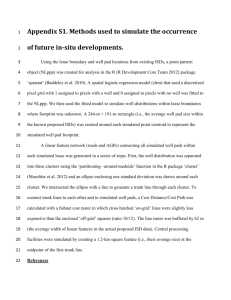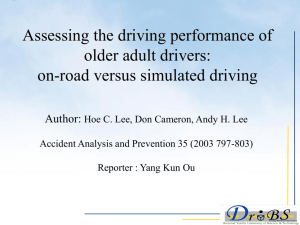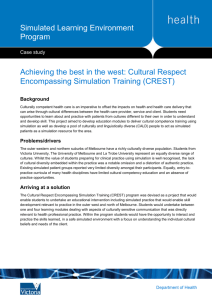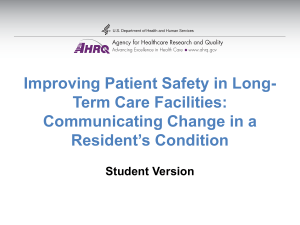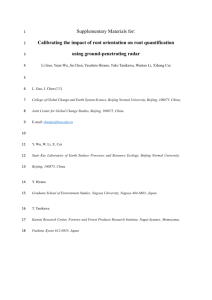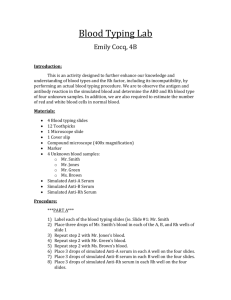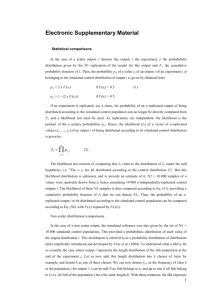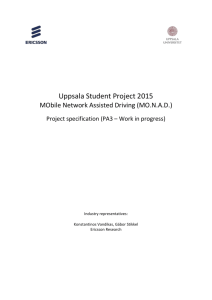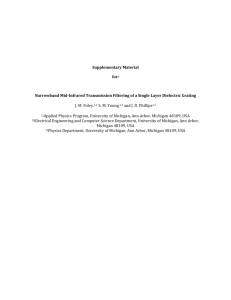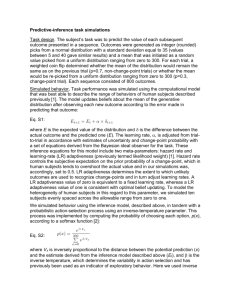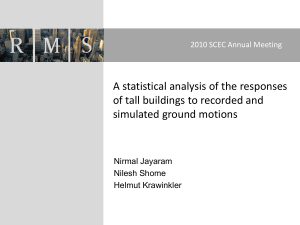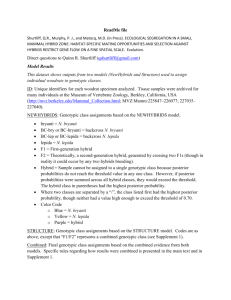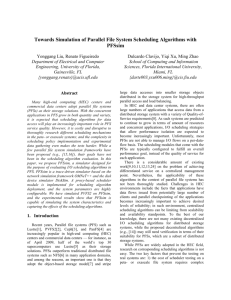Impact of Central Line Simulation Prior to ICU Experience
advertisement
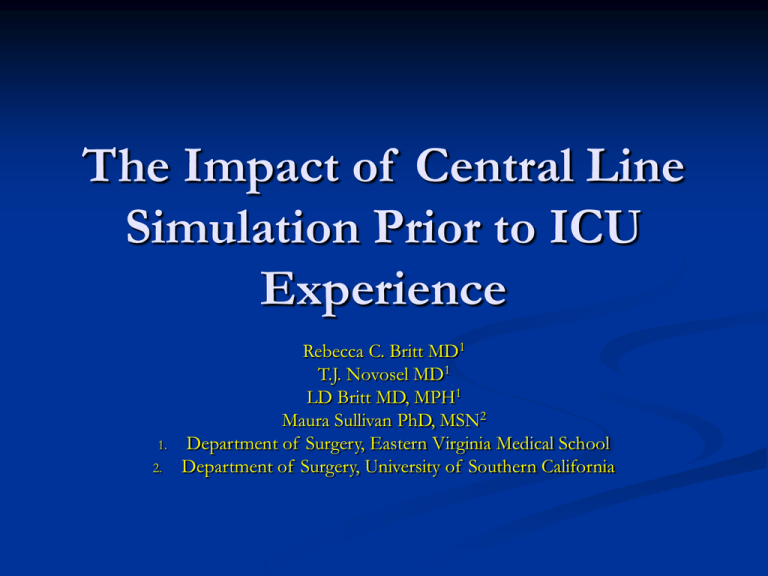
The Impact of Central Line Simulation Prior to ICU Experience 1. 2. Rebecca C. Britt MD1 T.J. Novosel MD1 LD Britt MD, MPH1 Maura Sullivan PhD, MSN2 Department of Surgery, Eastern Virginia Medical School Department of Surgery, University of Southern California Introduction Classic dogma of “see one, do one, teach one” has been challenged due to changes in health care environment, particularly regarding concerns for patient safety. Apprenticeship model leads to wide variation of skill sets that are taught. Residents are frequently uncomfortable with this model, especially when performing invasive skills. Introduction Partial task simulators designed to teach central line placement on a mannequin prior to performing the task on patients recently designed. Several studies have examined the impact of supervised training on resident central line performance, but no study has shown the effectiveness of a partial task simulator for this skill. Purpose This study was designed to prospectively evaluate whether resident performance when placing central lines is improved following simulation training on the partial task simulator CentralLineMan ® (Simulab). Additionally, we assessed whether patient outcomes were impacted by resident simulation. Methods Prospective, randomized trial of standard training, defined as apprentice model with senior resident or fellow supervising, versus simulated training using the partial task simulator. Both groups received a standard lecture on central line placement. Statistical analysis done using MedCalc® software for comparison of proportions and chi-squared analysis. Significance defined as p<0.05. Methods All junior residents beginning the trauma rotation within study period invited to participate. Randomization done on a monthly alternating schedule. Each participant completed an anonymous survey of previous experience. Each line placed was monitored, with data collected on performance and complications. Results Standard (n=21) Simulated (n=13) P value # prior lines 7.9 (10.7) 10.6 (8.2) 0.44 Prior IJ 1.9 (2.6) 2.3 (2.6) 0.66 Prior SCV 4.9 (8.5) 4.6 (4.8) 0.91 Knowledge of prep (1-5) 3.95 (0.92) 3.85 (0.80) 0.75 Knowledge of equipment (1-5) 3.62 (1.02) 3.77 (0.73) 0.65 Knowledge of technique (1-5) 3.33 (0.91) 3.46 (0.78) 0.67 Perception of ability (1-5) 2.86 (1.12) 2.85 (1.21) 0.98 Table 1. Comparative survey (self-assessed) of subjects at study enrollment Results A total of 39 central line attempts were monitored in the standard group and 34 in the simulated group. 5 attempts were internal jugular, all using ultrasound guidance. The remaining 68 lines were placed in the subclavian vein. Results The simulated group had a significantly higher level of comfort and ability than the standard group, as judged by the evaluator. Performance Standard rating (n=39) Simulated (n=34) P value Resident comfort (1-5) 2.93 (0.87) 3.35 (0.84) 0.03 Resident ability (1-5) 2.89 (0.85) 3.38 (1.04) 0.03 Average # sticks 2.59 (1.41) 2.41 (1.86) 0.64 Table 2. Resident comfort and ability Results The simulated group outperformed the standard group on 12 of 15 variables monitored, although this did not reach statistical significance. There were significantly more complications in the standard group, including pneumothorax, arterial puncture, and inability to complete the procedure. Results-Performance Measures Standard (n=39) Simulated (n=34) P value Improper hand wash 3/39 (7.7%) 3/34 (8.8%) 0.80 Improper prep 2/39 (5.1%) 1/34 (2.9%) 0.91 Improper drape 7/39 (17.9%) 2/34 (5.8%) 0.22 Setup incorrect 4/39 (10.3%) 3/34 (8.8%) 0.86 No trendelenburg 5/39 (12.8%) 6/34 (17.6%) 0.81 Incorrect landmark ID 1/39 (2.6%) 0/34 (0%) 0.96 Incorrect angle 9.39 (23%) 5/34 (15%) 0.55 Missed 1st attempt 27/39(69.2%) 17/34 (50%) 0.15 Average sticks 2.59 (1.41) 0.64 2.41 (1.86) Unable to pass over wire 12/39(30.8%) 8/43 (23.5%) 0.66 Results-Complications Standard (n=39) Simulated (n=34) P value Arterial puncture 1/39 (2.6%) 0/34 (0%) 0.96 Need for senior resident to take over 12/34 (35%) 0.11 Inability to place 11/39 (28.2%) line 5/34 (14.7%) 0.25 Pneumothorax 0/34 (0%) 0.17 3/34 (8.8%) 0.87 22/39 (56%) 4/39 (10%) Improper 2/39 (5.1%) position on X-ray Results-Summary of Performance Standard Performance 45/309 Errors (19.9%) Complications 40/195 (20.5%) Simulated P value 45/306 (14.7%) 0.09 20/170 (11.7%) 0.03 Line Infections Simulated group total of 495 line days, 8 line infections Standard group total of 590 line days, 3 line infections Infection per line day P value Standard 0.005 0.05 Simulated 0.02 Conclusions Simulation for central line placement using a partial task simulator does positively impact resident performance, particularly in regards to line complications. Training on the simulator prior to performance on patients has been incorporated into training for all junior residents rotating on the trauma service. Future Directions Establishment of proficiency standards for training on the central line partial task simulator necessary to ensure adequacy of training. Continued improvements in simulators available. Incorporation of use of ultrasound for training on IJ placement.


